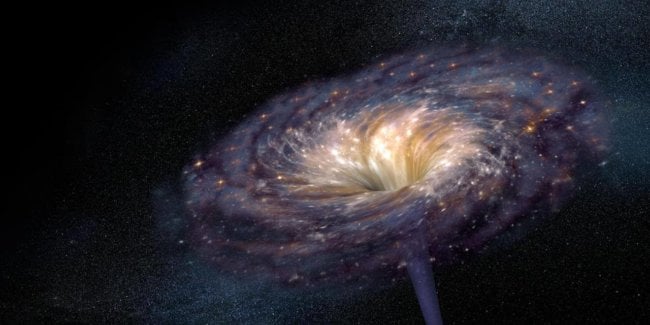
Not so easy to imagine, given the diversity of the forms taken by matter in the Universe, over millions of years, there was only neutral gas atoms of hydrogen and helium. And similarly, it is difficult to imagine that one day, in a million billion years all the stars will be darkened. There will be only the remains of our still alive… the Universe and black holes. But they will not live forever. In this connection an interesting question is born. What happens when a black hole lose enough energy as a result of Hawking radiation, so that its energy density will no longer be able to maintain a singularity with an event horizon? That is, when the black hole will cease to be a black hole due to Hawking radiation?
To answer this question, it is important to understand what actually a black hole.
Black holes are usually formed by the collapse of the core of a massive star, when the spent nuclear fuel ceases to synthesize heavier elements. The slowdown and cessation of the synthesis, in the nucleus decreases the pressure of radiation, which was the only thing that kept the star from gravitational collapse. While the outer layers often experienced the growing fusion reaction, fanning the former star in a supernova, the core collapses first to a neutron star, but if the mass is too large, the neutrons quanta collapse into the dark even more dense as a black hole. Also black hole can form when a neutron star will gain enough mass from the companion star and crosses the threshold required to turn into a black hole.
From the point of view of gravity to become a black hole, you just need to gain enough mass in a sufficiently small volume of space from which even light cannot get out. Each weight, including the planet Earth has an escape velocity: the speed that you need to develop to fully withdraw from the gravitational attraction at a certain distance (e.g., distance from the centre of the Earth to its surface) from its center of mass. But if enough mass that the escape velocity becomes equal to the speed of light, in this case, nothing will be able to overcome this barrier, because nothing can exceed the speed of light.
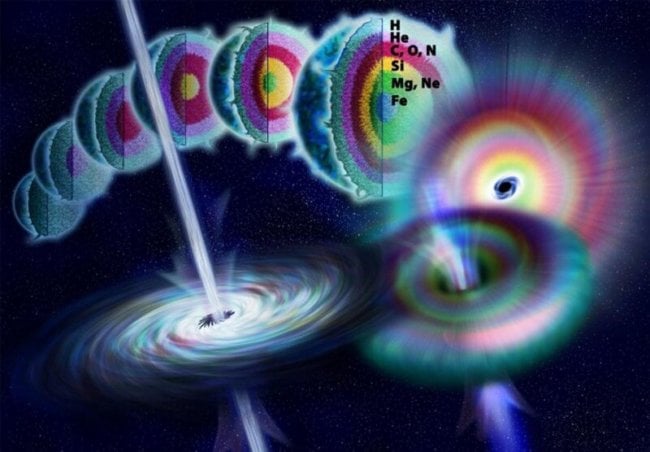
Is the distance from the center of mass where the escape velocity equals the speed of light — call it R — determines the size of the event horizon of a black hole. But the fact that in such conditions, matter exists, has one more subtle consequence: this matter should collapse into a singularity. We can assume that there must be a state of matter which is stable and in a specific volume within the event horizon, but it is physically impossible.
To show external strength, inner particle has to send a particle-carrier forces from the center of mass to the event horizon. But the carrier power is also limited by the speed of light, and regardless of where you are within the event horizon, all light-like curves end at the center. For slow and massive particles is still worse. As soon as you form a black hole with the event horizon, all matter inside to curl up in a singularity.
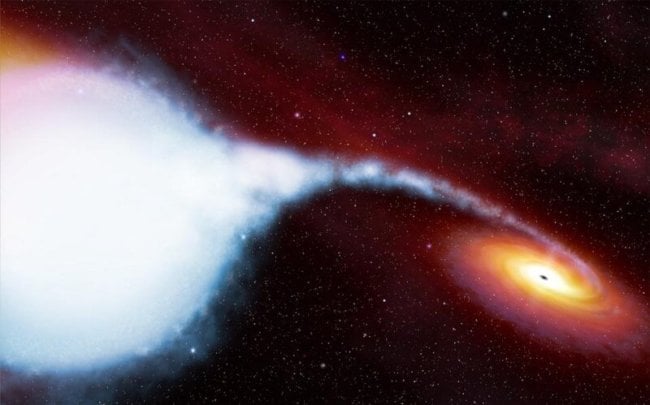
And since nothing can escape a black hole, you would think that a black hole will remain so forever. And if not for quantum physics, then it would have been. But in quantum physics there is a nonzero amount of energy intrinsic to space: the quantum vacuum. In a curved space, the quantum vacuum acquires very different properties than flat, and there are no fields, the curvature of which would be greater than near the singularity of a black hole. Combine these two laws of nature — quantum physics and relativistic space-time near a black hole — and get the phenomenon of Hawking radiation.
Calculations of quantum field theory in curved space give a surprising decision: in the space surrounding the event horizon of a black hole emits a thermal radiation of a black body. And the smaller the event horizon, the greater the curvature of space near the event horizon, and together with the higher rate of Hawking radiation. If our Sun were a black hole, the temperature of Hawking radiation would be 62 nanokelvin; if you took a black hole in the center of our galaxy, 4 000 000 times more massive than the sun, the temperature would have been 15 femtocells, or 0,000025% of the radiation temperature of a smaller object.
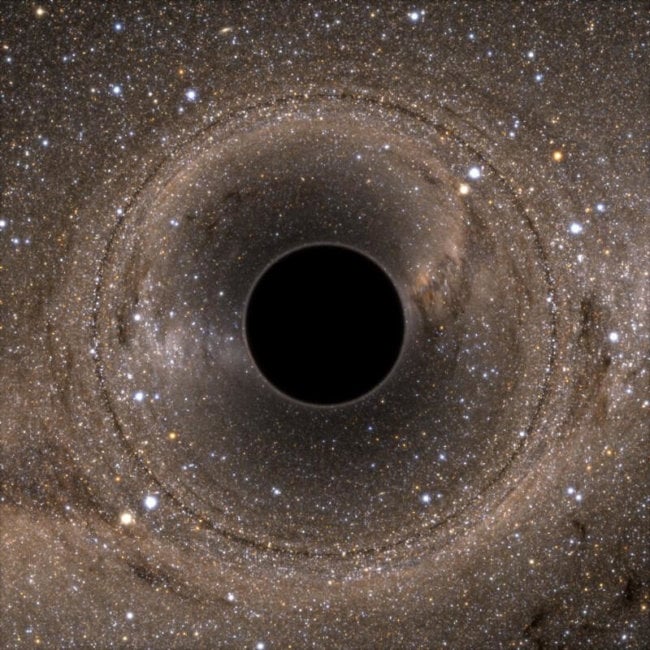
This means that the smaller the black hole, the faster it decays, and long live the large. A black hole of solar mass would exist around 1067 years to evaporate, but the black hole at the center of our galaxy will live in 1020 times longer. It is interesting that until the very last second of the existence of the black hole will remain the event horizon. After the formation of the singularity, and remains the event horizon — it will remain a singularity until then, until the mass will not be zero.
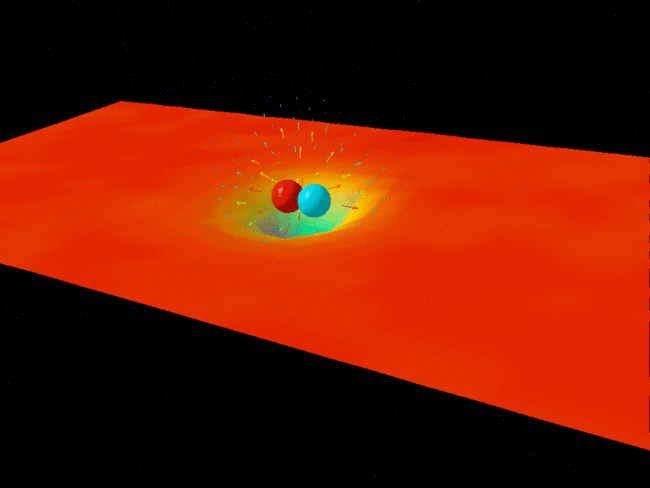
However, this last second of life of the black hole will lead to very specific and powerful release of energy. When the mass falls to 228 metric tons, it is a signal that is exactly one second. The size of the event horizon at this time will be yoctometre 340 or 3.4 x 10-22: the size of one wavelength of a photon with energy exceeding the energy of any particle has ever produced TANK. In this last second will be released 2.05 x 1022 joules of energy, five million megatons of TNT. It’s as if a million thermonuclear bombs exploded in the tiny piece of space; it is the final stage of evaporation of a black hole.
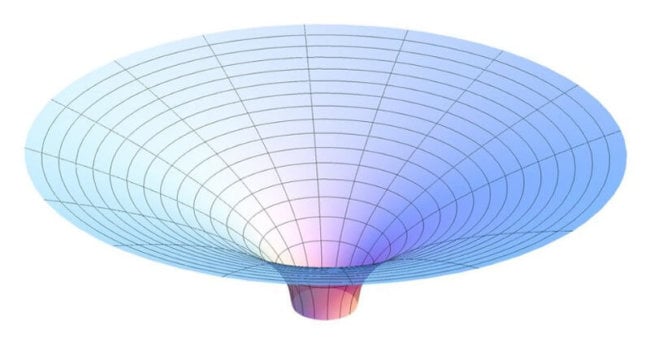
What will be left? Just the outgoing radiation. In the past the space was a singularity, in which the mass and, possibly, charge and angular momentum existed in an infinitely small volume, is no more. The space will be restored to its nonsingular state, as if there was nothing before. But when it happens, the universe will have time to do all his work trillions of times. There will be no more no stars or other light sources, evaporates when the first black hole. And there is no “threshold” after which it should happen. Just a black hole must completely evaporate. And as far as we know, there will be only radiation.
In other words, if you were watching as it evaporates the last black hole in our Universe, you would see only the black void of space in which there would be no light, no signs of activity for over 10100 years or more. A sudden strong burst of radiation of a certain spectrum and the value would be the last time our observable universe bathes in radiation. The evaporation of the last black hole will be the last time, when the universe will say: let there be light!
What happens when it evaporates, the singularity of a black hole?
Ilya Hel